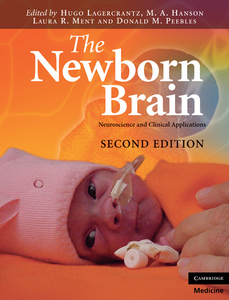Development of the somatosensory system
Rees, Sandra, Walker, David, and Jennings, Ernest (2010) Development of the somatosensory system. In: Lagercrantz, Hugo, Hanson, M.A., Ment, Laura R., and Peebles, Donald M., (eds.) The Newborn Brain: neuroscience and clinical applications. Cambridge University Press, Cambridge, UK, pp. 129-145.
![[img]](https://researchonline.jcu.edu.au/17686/1.hassmallThumbnailVersion/17686_Rees_et_al_2010_front_cover.jpg)
|
Image (JPEG) (Book Cover)
- Cover Image
Download (348kB) |
|
|
PDF (Published Version)
- Published Version
Restricted to Repository staff only |
Abstract
[Extract] The somatosensory system deals with information from a variety of sensory receptors located in the skin, muscles, joints, and other deeper tissues. It enables us to experience touch, pain, warmth, and cold, and to sense the position and movements of our body. Understanding how this system develops structurally and functionally during embryonic and fetal life provides an insight into how the fetus and newborn infant develops the capacity to receive and experience sensations arising from noxious, tactile, thermal, or mechanical stimuli. Although it will be difficult to determine, unequivocally, when the fetus is first aware of its surroundings and conscious of perceiving these stimuli, we can at least define when the minimum structural and functional apparatus necessary to do so is present.
In this chapter we will first describe the structure of the main pathways that transmit tactile, thermal, nociceptive, and proprioceptive information from the periphery to the cerebral cortex via synaptic connections in the spinal cord or brainstem. We will then describe the structural, neurochemical, and functional development of the somatosensory system and the development of descending pathways from the brainstem which modify this activity. We will speculate on whether activity in the fetal somatosensory pathways is a necessary requirement for the appropriate development of these pathways as it appears to be for the visual system (Goodman & Shatz, 1993; Penn & Shatz, 1999). Clearly, very little experimentation can be performed on the human fetus, and laboratory animals are therefore used to answer these questions.
| Item ID: | 17686 |
|---|---|
| Item Type: | Book Chapter (Research - B1) |
| ISBN: | 978-0-521-88975-9 |
| Date Deposited: | 20 Oct 2011 04:35 |
| FoR Codes: | 11 MEDICAL AND HEALTH SCIENCES > 1114 Paediatrics and Reproductive Medicine > 111401 Foetal Development and Medicine @ 50% 11 MEDICAL AND HEALTH SCIENCES > 1109 Neurosciences > 110999 Neurosciences not elsewhere classified @ 50% |
| SEO Codes: | 97 EXPANDING KNOWLEDGE > 970111 Expanding Knowledge in the Medical and Health Sciences @ 100% |
| Downloads: |
Total: 481 Last 12 Months: 4 |
| More Statistics |



